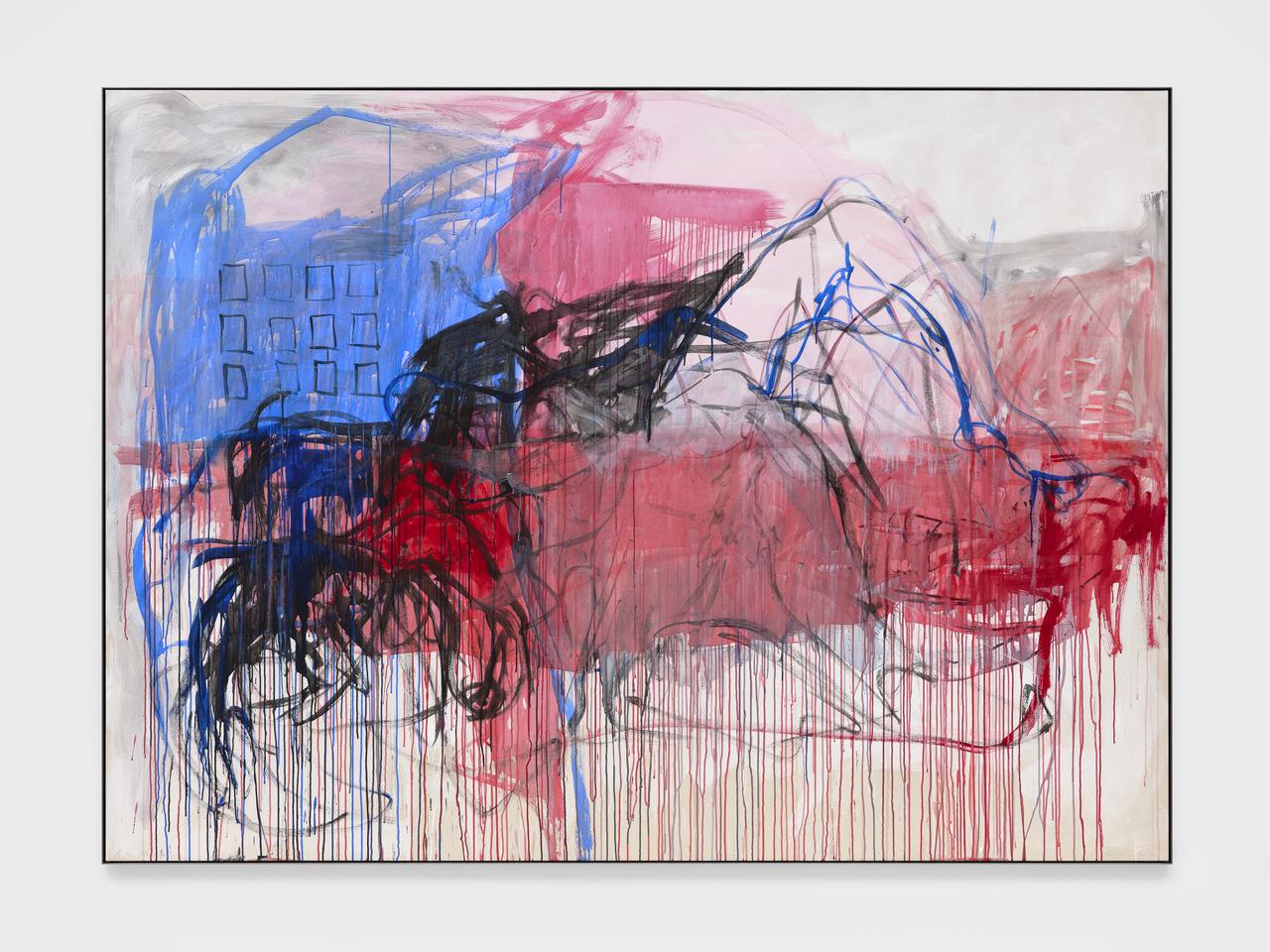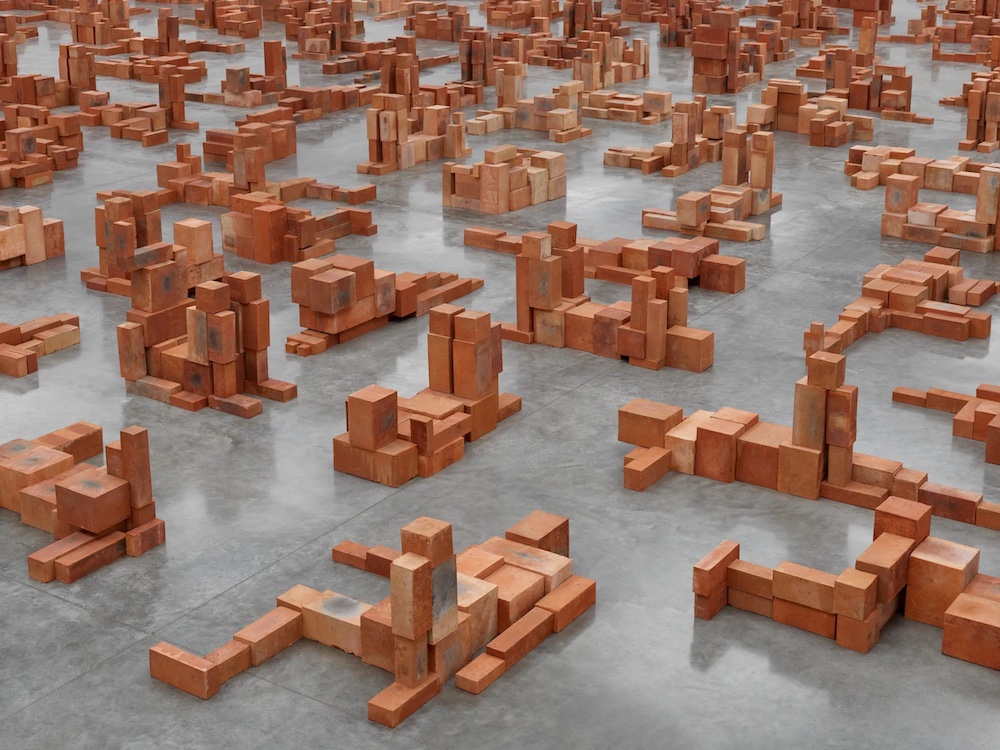This is your last week to see “Matrescence” at Richard Saltoun Gallery in London. The show is part one of a two-part series investigating mothering, curated by scholar Catherine McCormack. On view are works by an international group of artists including Eve Arnold, Jo Spence, Laia Abril, Liv Pennington, Xiao Lu, among others, exploring the physical and emotional transition of becoming a mother, experiences of loss, and issues of censorship around the female body. The second part, “Maternality,” opens January 10, featuring the work of artists like Aimee Gilmore, Helen Chadwick, and Robyn Leroy-Evans.
Whitewall spoke with McCormack about both exhibitions, a project she began exploring while she was a phD student and pregnant with her first child. She shared with us how many artists included in the show have had their work deemed “not serious” simply because it dealt with issues around mothering.
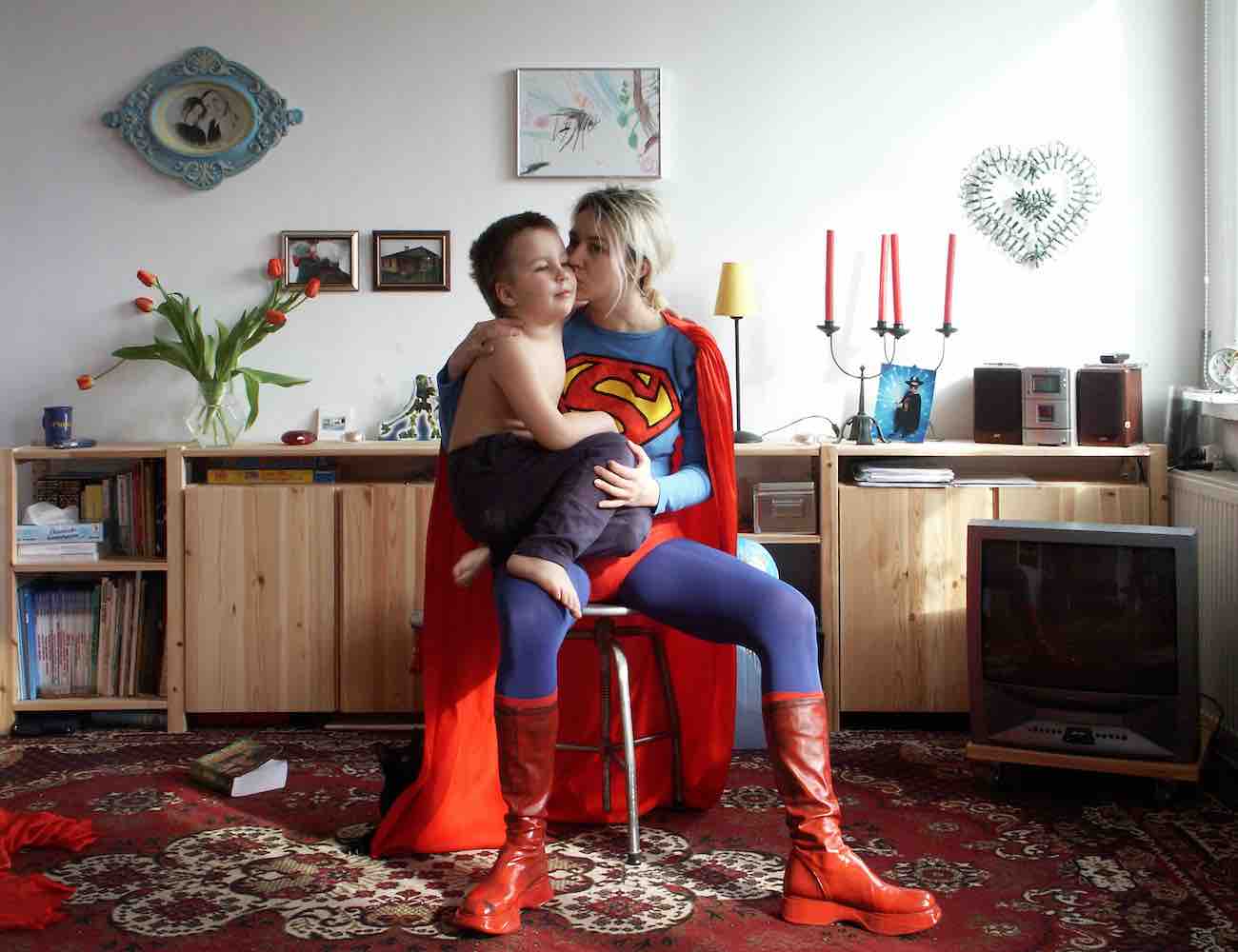 Elzbieta JABLONSKA
Elzbieta JABLONSKASupermatka [Supermother]
2002
Set of 3 digital c-prints
Each: 130 x 100 cm
Edition 4 of 6
Copyright The Artist
WHITEWALL: What was the starting point for this two-part exhibition?
CATHERINE MCCORMACK: In some ways it has been a long-incubated project for me as a curator—since I was a PhD student and became pregnant with my first child I became interested in the politics of maternity and also in feminist theory concerning representations of mothering. I had been exploring this in my teaching at Sotheby’s Institute of Art in London, so when Richard Saltoun were planning their 100% women program and wanted to include a group show considering themes in contemporary art and mothering it was a natural fit.
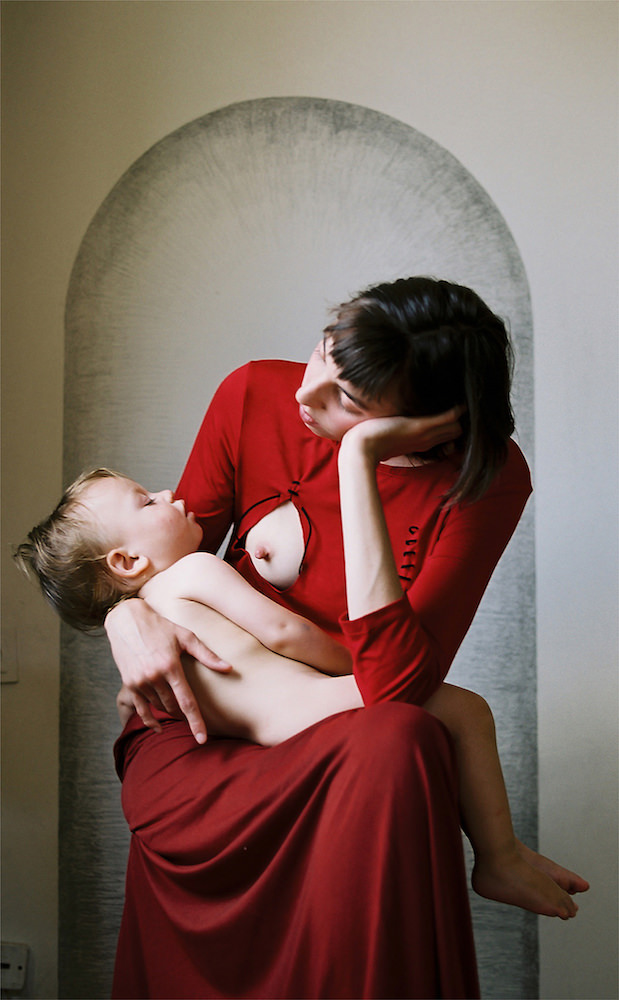 Leni DOTHAN
Leni DOTHAN Sleeping Madonna
2011
Mother, child, drawing on wall
02:46′ video in loop, 2011
Courtesy the artist
WW: Can you tell us about the first iteration, “Matrescence” and the meaning of the term?
CM: The term was developed by anthropologist Dana Raphael in the early 1970s to explore the physical and emotional transitions of becoming a mother. Births tend to focus on the arrival of a new baby, and not so much on the birth of a new identity for the mother, a transformation that can be fraught. Matrescence can be thought of a bit like how we understand the stage of “adolescence”—in other words as a period of pronounced changes that are characterized by conflicts and contradictions, awkwardness and uncertainty and discomfort. I also like the term because it sidesteps the overdetermined preconceptions wrapped up in the categories of “mother” and “motherhood”. I’ve chosen works that reflect the theme of matrescence in that they are works that bring things about maternal experience to the surface but don’t necessarily offer a resolution.
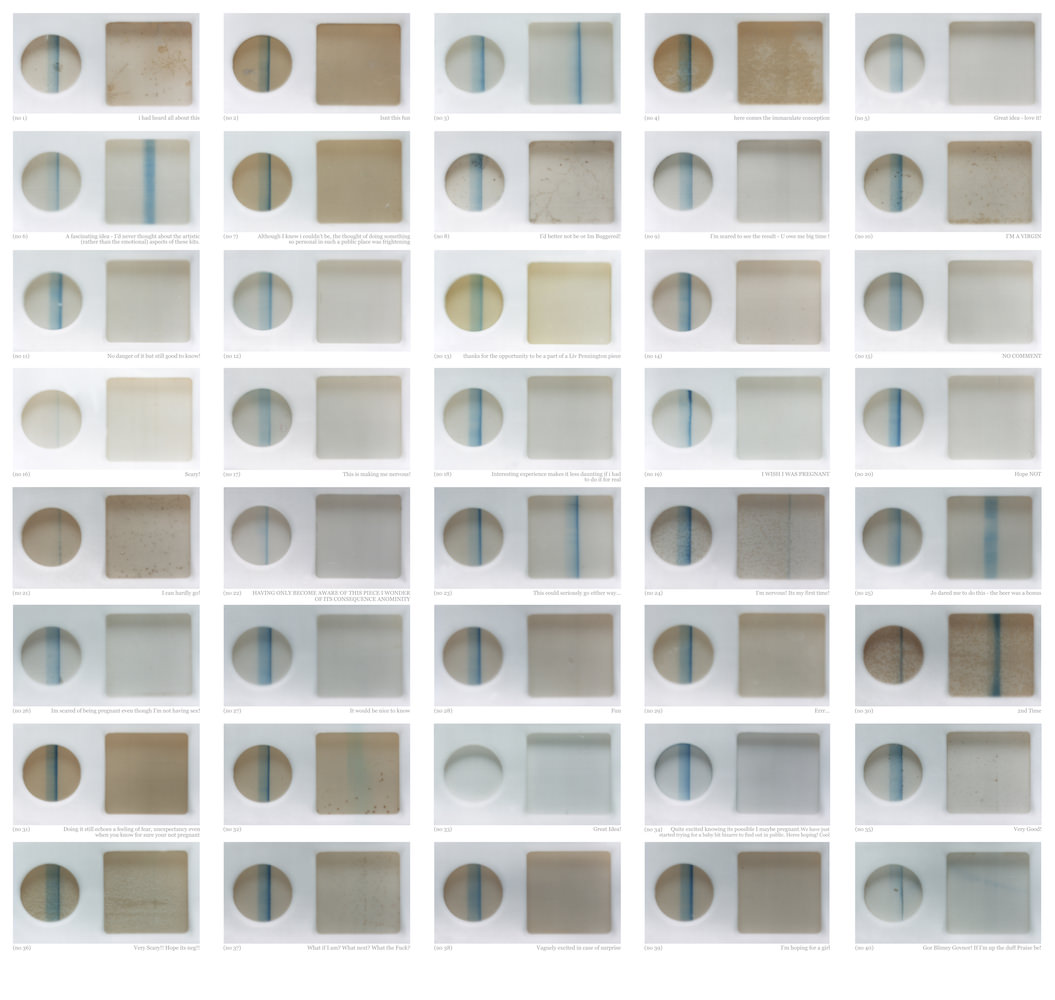 Liv PENNINGTON
Liv PENNINGTON Private view
2006
Digital C type on Aluminium
80 x 76 cm
Edition of 3 + 1 AP
© Liv Pennington
Courtesy the Birth Rites Collection (BRC)
WW: Can you share how some of the artists deal with issues of that shift of the mind and body after becoming a mother?
CM: Some are literal, for example Annegret Soltau’s stitched photograph visualizes the fragmentation and rebuilding of a body that comes apart at the seams as bodies and organs grown and develop and come apart. I find this idea endlessly fascinating.
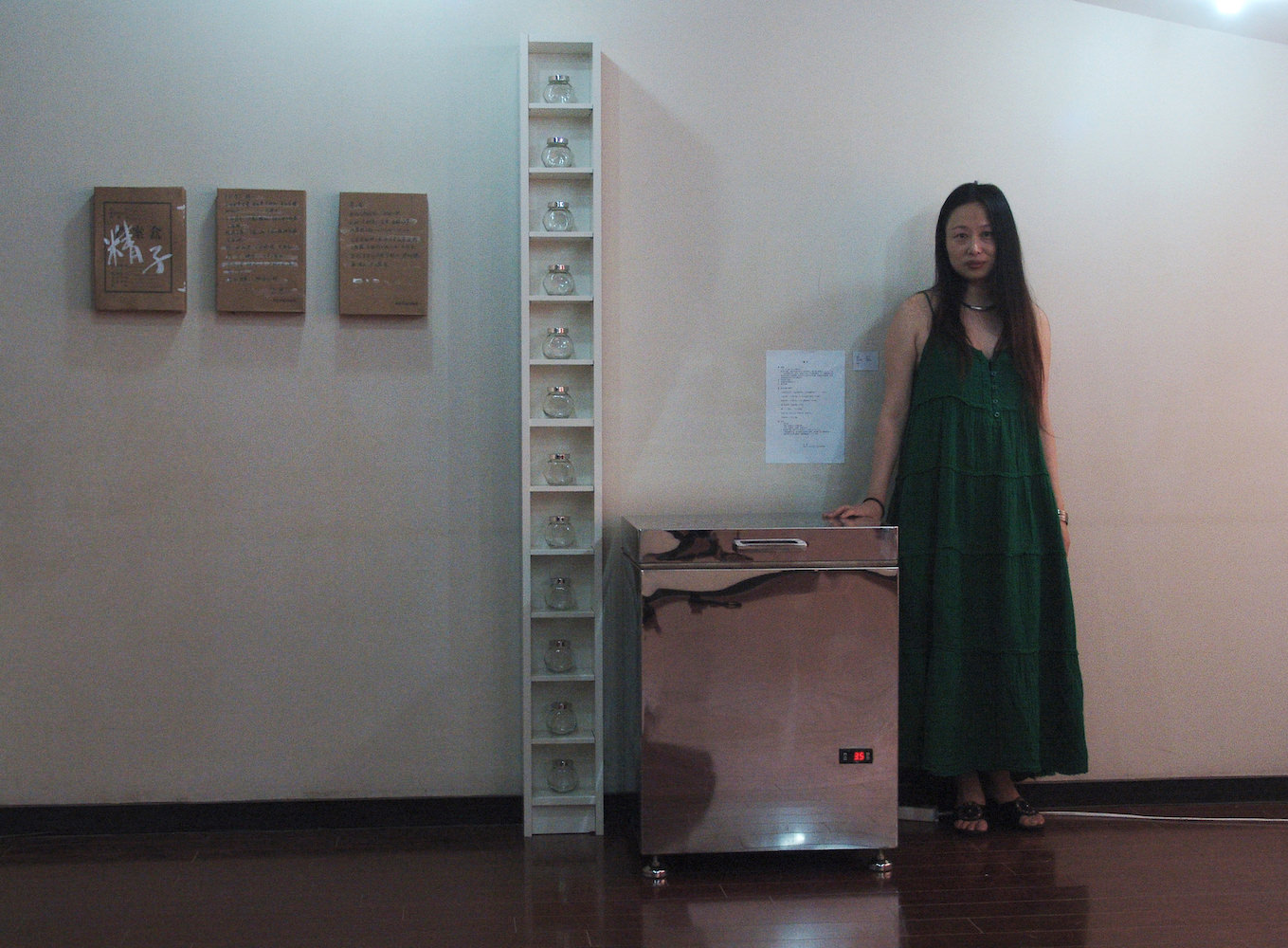 XIAO Lu
XIAO Lu Sperm
2006
Archival photograph
© The Artist
Courtesy 10 Chancery Lane Gallery, Hong Kong and Richard Saltoun Gallery, London
Others examine the idea through the toppling of expectations and ideals such as Leni Dothan’s Sleeping Madonna, which exposes the exhaustion and ambivalence beneath the veneer of idealized perfection that archetypal images of mothering have promoted. This work came out of Dothan’s experience as an artist who had admired Renaissance altarpieces of the Madonna and Child but found that her own experience didn’t match up to what she had imagined. Laia Abril’s series “On Abortion” reflects on different shifting processes of mind and body and self-identity encountered by women after having abortions. It’s matrescence in a different way, a sort of interrupted matrescence, which is even more complex and therefore vital to acknowledge in my opinion.
WW: How do some of the artists address the issues of censorship around images of childbirth, even nursing?
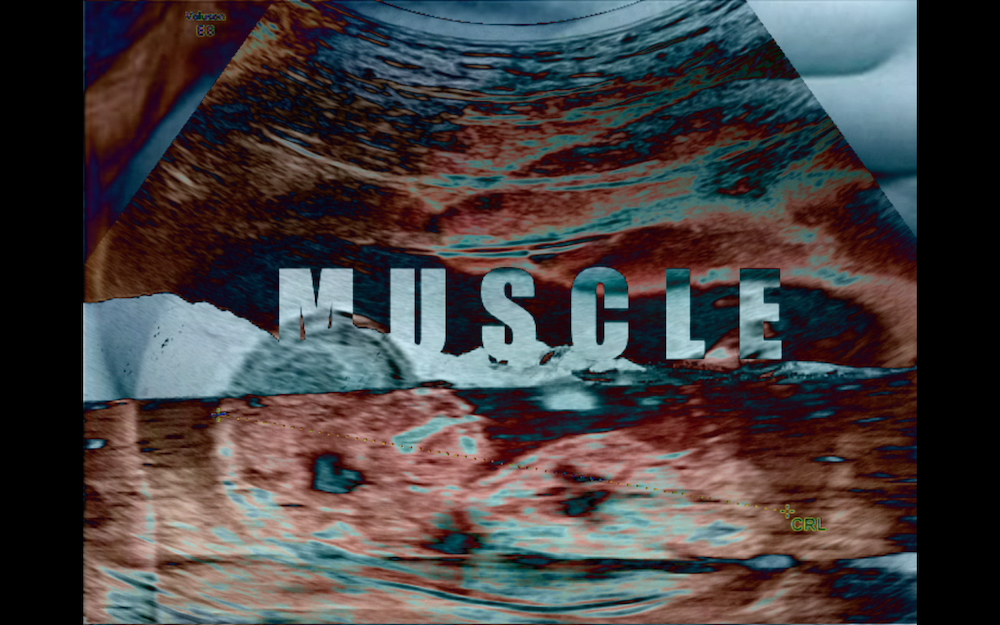 Helen BENIGSON
Helen BENIGSONPump
2017 (still)
HD Video, 8 minutes 11 seconds
Courtesy the artist
CM: The issue of censorship is a wonderful question to ask because I’m interested in how women’s bodies and physical experiences are censored even from themselves—this was the starting point for Hermione Wiltshire’s appropriated photograph of Therese in Ecstatic Childbirth (an image taken from radical midwife Ina May Gaskin’s guide to midwifery). After spending time observing how national accredited and widespread institutions in the UK prepared women for childbirth the artist was struck by how explicit images of birt—such as the moment of crowning—were held back from pregnant women, for fear of traumatising them.
To me this is a serious crime against women’s bodily autonomy and is connected to the management of childbirth by medical professionals as a crisis to be managed, rather than an experience, which has the potential to be deeply empowering. This image itself has had a notoriously troubled history of display and has been repeatedly censored from public display in collections, including in its home in the Birth Rites Collection in London. It has invited strong impassioned criticism and labelled as “obscene” or “pornographic”, because there is the opportunity to read the evident pleasure in the birthing mother’s face as orgasmic or uncomfortably sexual.
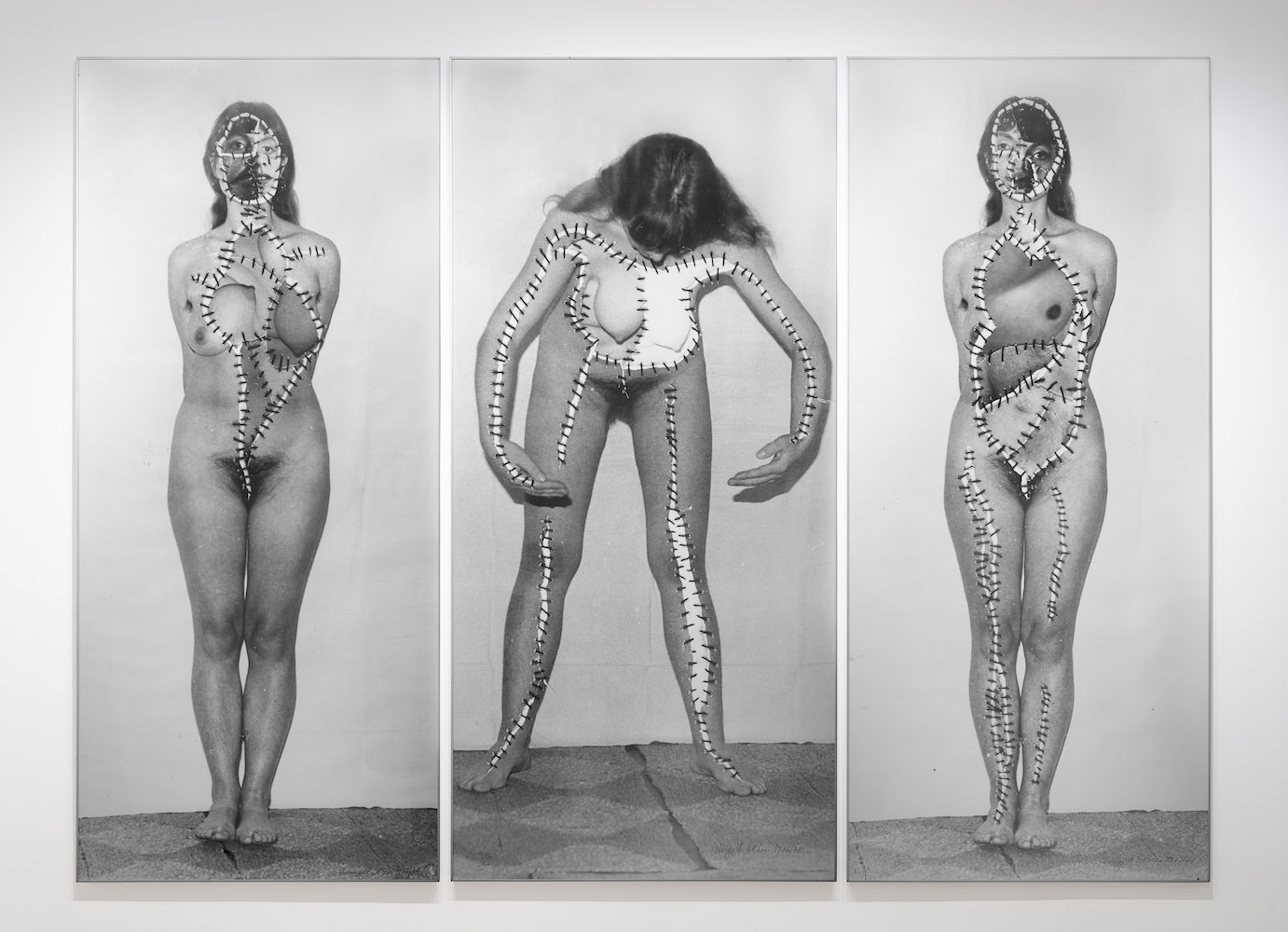 Annegret SOLTAU
Annegret SOLTAUKörper-Eingriffe (schwanger) [Body intervention (pregnant)]
1977/78
Set of 3 gelatin silver prints
250 x 115 cm (each)
© Annegret Soltau
Courtesy Richard Saltoun Gallery
But this in itself is more complicated. I think that we read any images of women experiencing physical pleasure as sexual but because those are the types of normalised images of women that we have been given to consume in visual culture. What really is being censored here is women’s power over the way they birth, and the power they gain from giving birth. That is intoxicating to me as a possibility.
WW: How is the issue of loss represented?
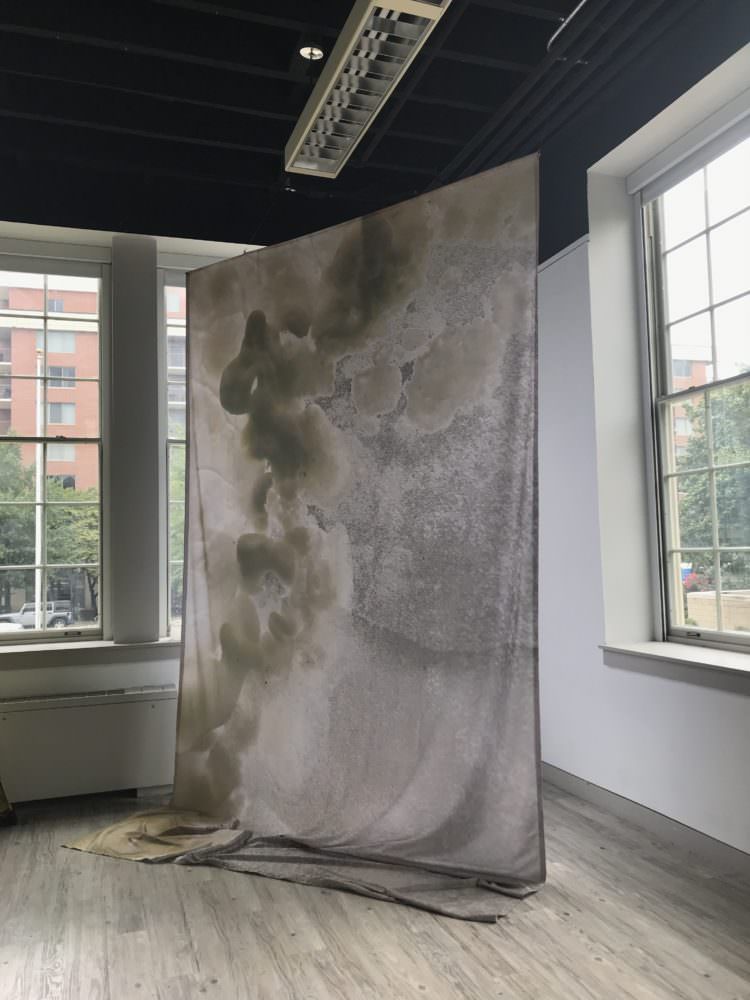 Aimee Gilmore
Aimee GilmoreMilkscape (column)
Courtesy of Aimee Gilmore.
CM: I think mothering is always already characterized by loss whether that is the collateral loss of former identity in the mother or the unavoidable fear of loss when expecting a child. Mothers are always grappling with the agony of potentially losing their child, which in some ways in what Leni Dothan’s work Mine is about. The mother figure is removing an object of harm from her son’s reach, but she cannot make the threat (also from herself) disappear entirely. I also wanted to importantly explore the feelings of physical and emotional loss in not mothering, whether that is through abortion or the inability to conceive and mother through personal and political circumstances. For example, Xiao Lu’s work Sperm documents the discussions the artist had around the ethics of assisted fertility, parenting and patriarchy in China, where as an unmarried woman over 40 she was not denied access to assisted fertility treatment (IVF)
WW: Artists who identify as female have been subject to criticism for making work on the subject of motherhood, characterizing it as “sentimental.” Do you think attitudes around this are evolving?
CM: Certainly the majority of the artists in this two-part exhibition have personally expressed their frustrations in not being taken seriously as artists whose subject matter revolves around maternal themes. It was also a subject that second-wave feminists tended to reject. But women have been making unsentimental art about this topic for a long time, at least since the nineteenth-century, but it’s a question of how they are seen and interpreted. I’m obsessed with thinking about Berthe Morisot’s paintings of mothers and children that visualize ambivalence and psychological alienation, but these are so frequently passed over as sentimental depictions of domestic life.
I think lots has happened in the past few years in literature and other cultural representations that has brought the complexity of maternal experience, its richness and darkness to the surface for consideration as part of the human condition and not just side-lined into “women’s issues”.
To call this an evolution is perhaps the wrong choice of word because what we are actually doing is a regression to understanding motherhood as it was understood in our early histories, before Christianity gave us the empty signifier of the sweet and pliant uncomplaining mother. Mespotamian and Babylonian mother goddesses such as Ninhursag and Tiamat were understood as immensely powerful primordial and sometimes frightening forces—in other words anything but sentimental.
WW: Can you tell us about what we can expect from the second half of the exhibition, “Maternality”?
CM: The second show reflects the etymological root of the word “mother” and its close relationship with the word for “material”, or “matter”, the very substance from which the universe is created (in Latin “mater/materia”). The maternal body itself has been a productive medium for artists to mine, for its literal ability to reproduce and replicate, and for its folds and internal spaces and fluids that it produces such as breastmilk. There will be a number of textile works to reflect this interest in matter and the fabric of the body—by artists Carmen Winant, Robyn LeRoy-Evans, and Aimee Gilmore and also video works by Helen Benigson who questions technological relationships that look to govern and analyse the body’s cycles of fertility and reproduction, from apps that monitor fertility, to the voices of the web that police and influence maternal behaviours. I’m also really excited to show the work of Danish artist of the feminist avant-garde Kirsten Justesen.







![_supermen Elzbieta JABLONSKA
Supermatka [Supermother]2002
Set of 3 digital c-prints
Each: 130 x 100 cm
Edition 4 of 6
Copyright The Artist](https://whitewall.art/wp-content/uploads/elementor/thumbs/supermen-qfjx4gwrupc2zy9iwwxe3wi8fx8ah68hj0olmabc58.jpg)


